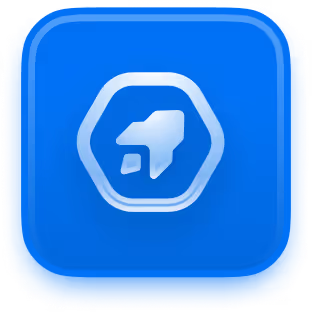Email marketing remains a potent tool for businesses to engage with their audience and drive conversions.
Crafting effective email campaigns requires a blend of creativity, strategy, and understanding of consumer behavior.
In this article, we'll explore various email marketing campaign examples and strategies aimed at maximizing conversion rates.
Understanding the Basics of Email Marketing
Understanding the basics of email marketing is like knowing how to send letters to your friends, but in a digital way! Instead of writing on paper, you use your computer to create messages about your product or service.
These messages are sent to people who might be interested in what you're offering – we call them your target audience. Just like putting a catchy title on a letter to get your friend's attention, you need an eye-catching email subject line to make people want to open your email.
.png)
When you see emails in your inbox from your favorite stores or websites, those are examples of successful email marketing campaigns!
Email marketing strategies involve sending promotional emails to potential customers. These emails contain persuasive email copy, which is like the words you use to convince your friends to join your game.
You collect email addresses from people who want to hear from you, usually by signing up on your website or at your store. Sometimes, these emails lead people to special web pages called landing pages, where they can learn more about your product or service and maybe even buy it!
With the help of marketing tools, like email marketing software, you can track how many people open your emails and what they do after reading them.
Just like writing a fun blog post or sharing updates on social media, email marketing is another way to reach people through different marketing channels.
Importance of Email Marketing
Email marketing is super important for businesses. It helps them connect with customers and keep them in the loop about what's happening. With email, businesses can send messages directly to people's inboxes, which is great for reaching a lot of people at once.
Plus, it's a way to build relationships with customers over time. When businesses send out emails regularly, it reminds customers about their brand and what they have to offer. This can lead to more sales and loyal customers who keep coming back for more.
Overall, email marketing is a key tool for businesses to stay connected with their audience and grow their business.
Components of an Effective Email Marketing Campaign
Let’s look at few important components that need to be added in your email marketing campaign:
1. Subject Line: The subject line is the first thing recipients see. It should be concise, compelling, and relevant to encourage recipients to open the email. Use Success.ai’s AI email writer tool to write compelling subject lines.
Example:
Subject Line: "Don't Miss Out: Limited-Time Offer Inside!"
Content: "Dear valued customer, we're excited to share an exclusive offer with you. Click to unveil savings you won't want to miss!"
.png)
2. Content: The content of the email should be engaging, informative, and tailored to the audience's interests. Whether it's promotional offers, educational content, or company updates, the content should provide value to the recipient.
3. Design: The email design should be visually appealing and consistent with the brand's identity. Use of images, colors, and fonts should enhance readability and convey the message effectively.
4. Call-to-Action (CTA): A clear and compelling CTA prompts recipients to take the desired action, whether it's making a purchase, signing up for a webinar, or downloading a resource. It should be prominently displayed and easy to click.
Example:
CTA: "Shop Now"
Content: "Ready to upgrade your wardrobe? Click below to explore our latest collection and enjoy free shipping on your first order!"
5. Personalization: Personalized emails have higher open and click-through rates. Address recipients by their name, segment the email list based on preferences or behavior, and tailor the content accordingly.
Example:
Subject Line: "Exclusive Offer Just for You, [Recipient's Name]!"
Content: "Hi [Recipient's Name], we noticed you've been enjoying our products! As a token of appreciation, here's an exclusive discount just for you."
Strategies for Maximizing Conversion Rates
Let’s look at 5 strategies that can be added to maximize conversion rate:
1. Segmentation: Segmenting your email list based on demographics, behavior, or purchase history allows you to send targeted and relevant content to different groups of subscribers, increasing the likelihood of conversion. Our lead finder tool can make your segmentation process easier.
2. A/B Testing: Experiment with different subject lines, content formats, and CTAs through A/B testing to identify what resonates best with your audience and drives higher conversion rates.
Example:
Test: A/B test subject lines to compare open rates.
Result: Subject Line A: "Flash Sale Alert: Up to 50% Off!" outperformed Subject Line B: "Don't Miss Our Exclusive Deals!"
.png)
3. Optimize for Mobile: With more people accessing emails on mobile devices, it's crucial to ensure that your email campaigns are mobile-friendly. Use responsive design and concise content to provide a seamless experience across devices.
4. Leverage Automation: Implement automated email workflows triggered by specific actions or milestones, such as welcome emails, abandoned cart reminders, and follow-up sequences. Automation streamlines the process and keeps your brand top-of-mind.
5. Provide Value: Focus on delivering valuable content that addresses the needs and interests of your audience. Whether it's educational resources, exclusive offers, or helpful tips, providing value builds trust and fosters customer loyalty.
Conclusion
Effective email marketing campaigns are instrumental in driving conversions and fostering customer relationships.
By understanding the key components of successful campaigns and implementing proven strategies, businesses can unlock the full potential of email marketing to achieve their goals.
Remember to continuously analyze performance metrics and adapt your approach to meet the evolving needs and preferences of your audience. To do this right, you need the right tools. Success.ai has what you need to make your email marketing really work well.


Try Success.ai No credit card required
Unlock unlimited access to 700M+ B2B leads, with unlimited email sending & warm-up. Supercharge your growth now with Success.ai!
















.avif)


.avif)





.avif)






.avif)









.png)




.jpg)

-min.jpg)









.avif)
.svg)
.avif)

